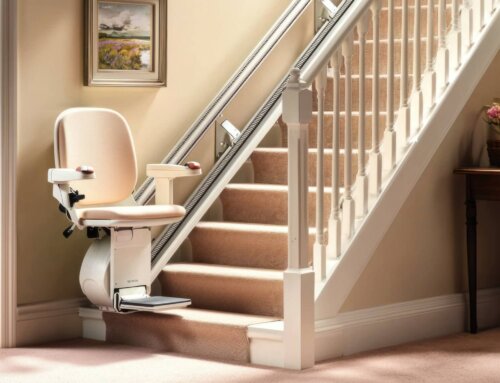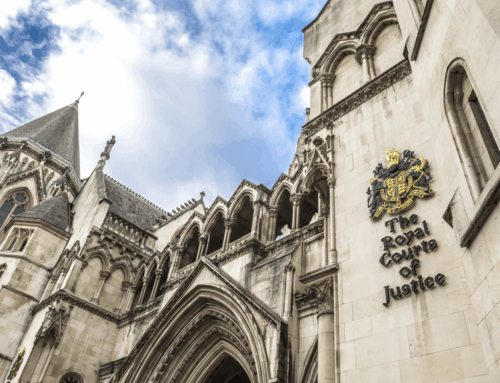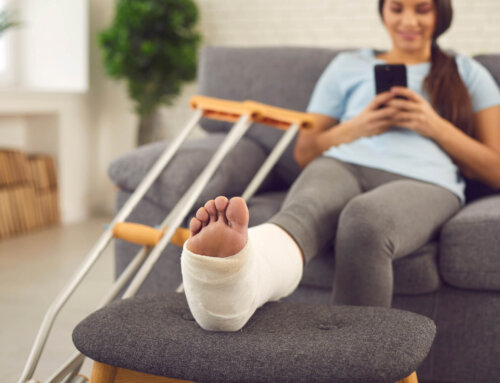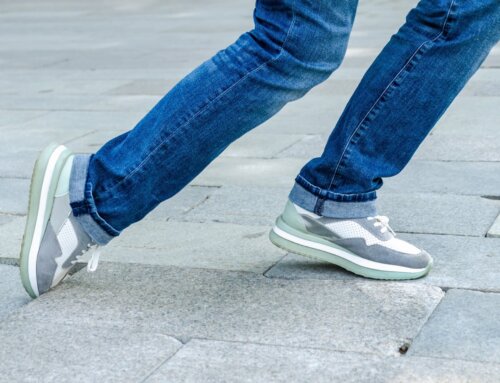*This article was first published in December 2020 and was updated with new guidance in March 2022.
Whether you ask a solicitor to make a personal injury claim on your behalf or you decide to deal with your own claim, there is a set format for the way that the parties to an injury claim, i.e., the claimant(s) and the defendant(s) conduct themselves, before starting formal legal proceedings. The format is known as the Pre-action Protocol for Personal Injury claims (PAP PI).
The PAP PI only (generally) applies to cases that have fallen out of the other Low-Value Protocols due to the Defendant’s failure to accept full liability or pay an interim in a timely fashion
The protocol must be used by the parties involved in personal injury cases, where the claim is likely to be allocated to something called the ‘fast track’ by the court. Cases that get dealt with under the ‘fast track’ procedure are those valued at £25,000 or less and are ones that, should they get to court, will take no more than a day to be heard.
This Protocol applies to cases in excess of £1,000 worth of Pain Suffering and Loss of Amenity (PSLA) i.e., injury compensation. This figure increased to £1,500 in April 2022.
What are the overall aims of the pre-action protocol?
The idea of having a set protocol or procedure for the way cases are to be dealt with before court proceedings are issued, is to :
- to ensure that both parties provide as much information as they have about the claim to each other
- to ensure that the parties communicate with each other meaningfully and investigate as many aspects of the claim, as possible
- support
- Promote the early use of medical treatment or rehabilitation for the claimant
- provide an opportunity to negotiate a settlement of the dispute
In the days before the protocol was introduced some claimant solicitors used to start court proceedings as soon as they could, without providing much information to the prospective defendants’ insurance company.
Their reason for issuing court proceedings so quickly was because insurers, when notified of a claim against one of their insured, had a tendency to take weeks if not months to respond to correspondence and would appear to do everything they could to delay a claim. Issuing court proceedings quickly tended to focus the insurers’ minds

The Protocols were brought in, so that both parties to a claim work to a set timetable and know what has to be done and by when. If either of them doesn’t abide by the steps laid out, then they will be penalised by the court.
The Protocol steps
What follows is a summary of some of the essential steps in the pre-action protocol for personal injury claims:
-
The Letter of Notification
This is the claimant’s initial letter to the defendant and/or insurer. It is sent to notify them that a claim is going to be made against their insured (the party that allegedly caused the accident). At this stage, the claimant is unlikely to have all the information that is required to send out a formal Letter of Claim. The defendant must at least acknowledge having received the Letter of Notification within 14 days of receipt.
-
Rehabilitation
The parties should address any immediate needs that the claimant has for medical and/or rehabilitation treatment, that will aid their recovery. Early treatment may enable the claimant to recover from their injuries more quickly. As well as the obvious benefits for the claimant this may mean the defendant will have less to pay out in damages (compensation) if the claimant recovers more quickly because of the availability of early rehabilitation treatment.
-
Letter of Claim
When the claimant is in a position to send it, two copies of the Letter of Claim should be sent to the defendant. This will contain information from the list below that is relevant to the type of claim being made:
a) Claimant’s full name
b) Claimant’s address
c) Claimant’s work/clock number
d) Claimants employer’s name and address
e) Details of the type of accident: road traffic accident, accident at work slip, trip or fall accident.
f) Date and time of the accident
g) Brief details of how the accident happened
h) Why it is being alleged that the defendant was at fault for the accident (e.g. defendant drove into the rear of the car at traffic lights; injury caused by defective machinery at work; slipped on a defective pavement).
i) Advise if obtaining a police report and confirm that a copy will be supplied on an undertaking to meet half of the fee.
j) A brief outline of the injuries that are being complained off
k) Name of the hospital at which claimant received treatment (if applicable)
l) Whether the claimant is still suffering from the injury and if so, request that the defendants offer rehabilitation/medical treatment.
m) Advise if the claimant is off work and losing earnings. Request the details of losses thus far if the claim is against the employer
n) Detail any other losses
0) Advise that a letter has been sent to the defendants’ insurers (if they are known)
p) Advise which documents are expected to be relevant
4. The Response
i) A response to the letter of claim must be made by the defendant within 21 days of the date of posting of the letter identifying the insurers. (Where there has been no reply by either defendant or insurers within 21 days, then the claimant is entitled to issue proceedings.)
ii) Once the defendant has responded to the Letter of Claim, the defendant insurer will have three months maximum in which to investigate the claim.
iii) Before the end of the three months, the defendant must reply and state whether liability is being admitted or not.
iv) Alternatively, if the defendant denies liability, they must state why they are doing so. They must also outline how they say the accident happened and provide copies of any documents they will use to support their argument.
-
Disclosure of documents
At this stage, the claimant will be expected to disclose (send to the other party and the court) the type of documents which would be enclosed with the Letter of Claim. This would be documents relating to any special damages being claimed, e.g. car repair invoice/ insurance excess receipt, car hire invoice, evidence of loss of earnings, receipts for the cost of replacing items damaged in the accident.
Disclosure by the Defendants includes documents relevant to the Defendant’s liability and whether the accident has caused the injuries complained of. So typical documents
- in a work-related claim might include training records, machine maintenance checks and risk assessments; whereas
- a supermarket slipping claim might include the store’s cleaning policies, CCTV footage and the accident report.
If the Defendants fail to provide such documentation the Claimant may take out a Pre-Action Application to the Court to obtain the documents needed to assess the strengths of the claim.
-
Experts Reports
In most fast-track cases, a medical report is likely to be the only expert report obtained. The protocol outlines the procedures to be followed. The claimant will usually provide a report from a medical expert whose details will have been provided to the defendant prior to instruction.
-
Alternative Dispute Resolution
The protocol makes a point of specifying that litigation should be a last resort. That is the whole reason for laying down a protocol in the first place – to try and avoid litigation and to save legal costs. The protocol reiterates this point by stating that the parties should consider some form of Alternative Dispute Resolution (ADR) as a means of settling the case without going to court if the matter cannot be resolved by negotiation. Forms of ADR include mediation and arbitration. If parties are resistant to even exploring the use of mediation, the court can penalise them in costs if it thinks their conduct was unreasonable.
-
Stocktake
If after going through the protocol process, the matter has not settled, now will be the time for each party to take stock of its position and of the strengths and any weaknesses in their respective positions. The final recommendation contained in the protocol is that before issuing court proceedings, the claimant should invite the defendant’s insurance company to nominate solicitors to act of their insured’s behalf. This invitation should be sent to the insurers 7 or 14 days before the claimant intents issuing proceedings.
Are there any consequences if either party to the claim, fails to follow the protocol?
The protocol has been designed with the aim of saving costs in personal injury claims and avoiding the need to go to court or at least issue court proceedings.
Therefore, if parties to a claim pay lip service to the protocol, they can expect to be penalised, most likely by having to pay the costs of not complying with a specific requirement of the procedure. When deciding what size of penalty should apply for a breach of the protocol, the court will apply the proportionality test, i.e. in the overall scheme of things, how serious is the breach, what effect will it have on the other party and the conduct of the party in default.
Note : “[t]he spirit, if not the letter of the Protocol, should still be followed for claims which could potentially be allocated to multi-track”.
Other Pre-action Protocols
There are other protocols for:
- low-value personal injury claims in road traffic accidents
- low-value personal injury claims in employer’s liability accidents and public liability accidents
- clinical disputes
- industrial disease and illness claims
- the RTA Small claims Protocol and the new whiplash tariff
The Whiplash Reforms that came into force at the end of May 2021 were intended to encourage people who suffer whiplash injuries in car accidents to pursue their own whiplash accident claims under the RTA small claims protocol.
Compensation for whiplash injuries is now awarded in line with a fixed tariff of rates, which varies according to the prognosis contained in a medical report obtained from a source designated by the Ministry of Justice.
The idea behind the whiplash reforms, was to encourage individuals who suffer whiplash injury in car accidents to pursue their own road traffic
The stated intention of the Ministry of Justice was to simplify the system of claiming, so as to enable ‘litigants in person’ to pursue their own claims through a newly built claims portal. Individual claimants are recommended to read the official injury claim ‘Guide to Making a Small Claim’ which runs to 64 pages in total!
Mooneerams solicitors are expert claimant personal injury solicitors. Having read this article If you have any questions that you’d like to ask us, either about the issues raised or you’d like to discuss making a personal injury claim, please don’t hesitate to call us on 029 2199 1927. You can also contact us by sending a message via our contact us page.
Posted in Personal Injury Claims









